BZS & Chubb Volunteers Plant Mangroves
The Bermuda Zoological Society [BZS] and volunteers from Chubb worked to create a suitable environment in preparation for the replanting of one of the island’s largest mangrove forests – the BZS’s most recent site established through the BZS Micro Forest Project.
A spokesperson said, “The Chubb volunteers also gained insight into one of Bermuda’s most unique nature reserves.
“Since 2003, and the onslaught of Hurricane Fabian that destroyed the sea wall at Hungry Bay, the red and black mangroves that once flourished at the protected nature reserve have been all but decimated by the wave erosion to the area.
“The team, which consisted of BZS Micro Forest Officer Nicholas Coelho, members of the Hungry Bay Planning Committee and 20 Chubb employees, spent the day creating a barrier of fallen black mangrove trunks and large rocks to help build a sufficient shield from the ocean to allow for the newly planted mangroves to gain a foothold and give them the best chance for survival.”
Mr. Coelho said, “The site poses some significant challenges due to tidal wave action that has caused erosion to the area, so creating this barrier was the first essential step to protecting the site from further erosion. The presence of this barrier will help lessen the impact on these developing seedlings.”
The spokesperson said, “The Micro Forest team created a planting strategy to account for the three areas of the Hungry Bay site including the canopy, the beachfront and the rocky debris field – dubbed the graveyard due to the dead mangroves in the area.”
“The beachfront is the easiest to replant because it is relatively shallow and it is in the intertidal zone and is free from a lot of the rocky debris that has been pushed up through the wave action over the years. This is a suitable location for the red mangrove seedlings we’ve been cultivating on Trunk Island in our mangrove nursery through the Micro Forest Project,” explained Mr. Coelho.
The spokesperson said, “Once the barrier was created and the site prepared with the removal of debris from the ‘graveyard,’ the team set to plant the red mangrove seedlings.
The red mangroves were planted first as they “are designed to withstand tough intertidal zones,” said Mr Coelho. The red mangroves also create a barrier to help protect the black mangroves further inland, which aren’t as well suited to withstand the wave action.
The spokesperson said, “The BZS team stated they were incredibly thankful for the work provided by both the Chubb volunteers and the Hungry Bay committee, who have been instrumental in providing their time and funds to the project.
“Colin Jones, who is a member of the committee, as well as a Hungry Bay resident, assisted in ferrying the necessary tools and supplies, as well as the mangrove seedlings, across the bay, as the site is only accessible by water.”
Mr. Jones said, “I am happy to support this project and to be part of a well-organized team. I grew up in and around mangroves both in Hungry Bay and Mills Creek, so I have seen firsthand how much of an impact they have on the ecosystem. I was saddened to see the regression in the Hungry Bay Reserve and was happy to have found like-minded individuals that were willing to commit to restore the reserve. I am looking forward to seeing the fruits of our labour in the years to come.”
The spokesperson said, “The Chubb volunteers who were onsite during the replanting were treated to a unique opportunity to help restore a protected nature reserve.”
“Chubb’s commitment to making a profound impact in the Bermuda community is exemplified by helping to restore the once flourishing protected nature reserve at Hungry Bay,” said Colin Brown, VP, Admin. & Facilities, Chubb Bermuda. “Personally, seeing the passion these volunteers displayed rebuilding this critical reserve has only strengthened our desire to see this project thrive and benefit the ecosystem for years to come.”
The spokesperson said, “The hope for the future of the site is to allow the mangroves to self-sustain, which can only come as the area starts to accumulate more carbon rich aggregate. The team hope the barrier will help create the perfect environment for the mangroves to flourish. The BZS Micro Forest team will also continue to propagate mangroves suitable for the area at the mangrove nursery on Trunk Island.”
Read More About
Category: All, Environment, News

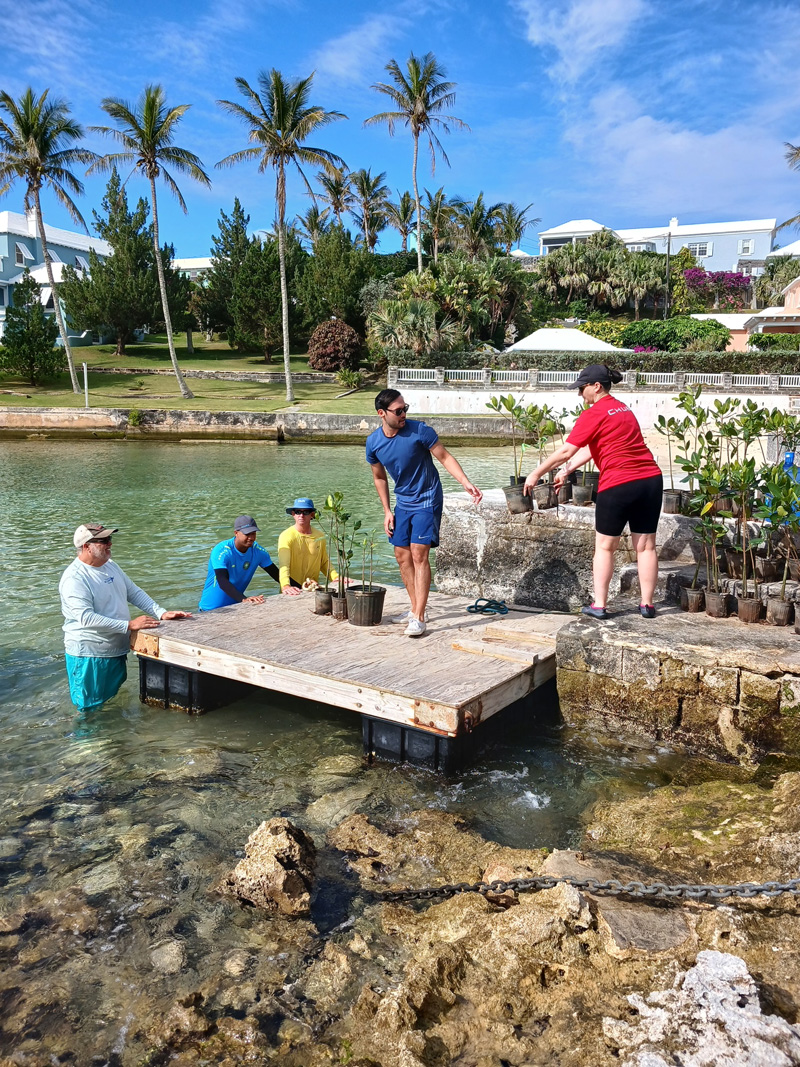
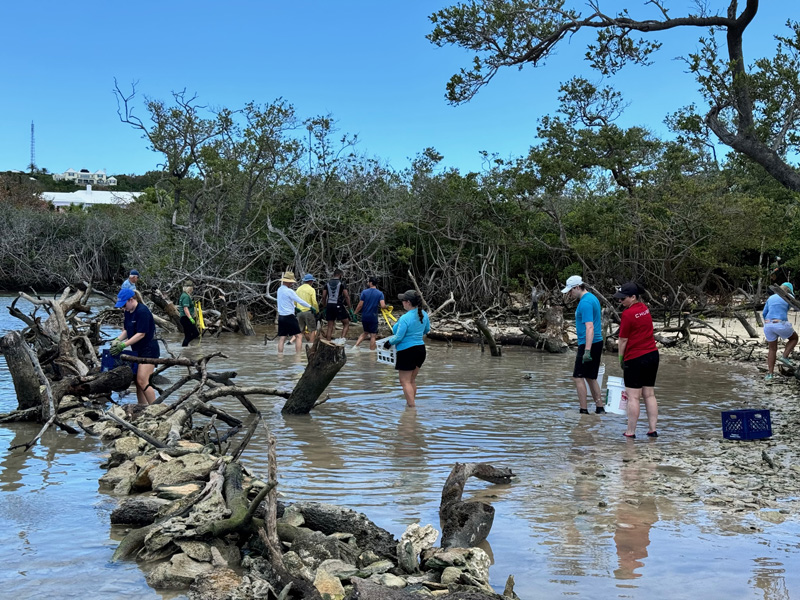
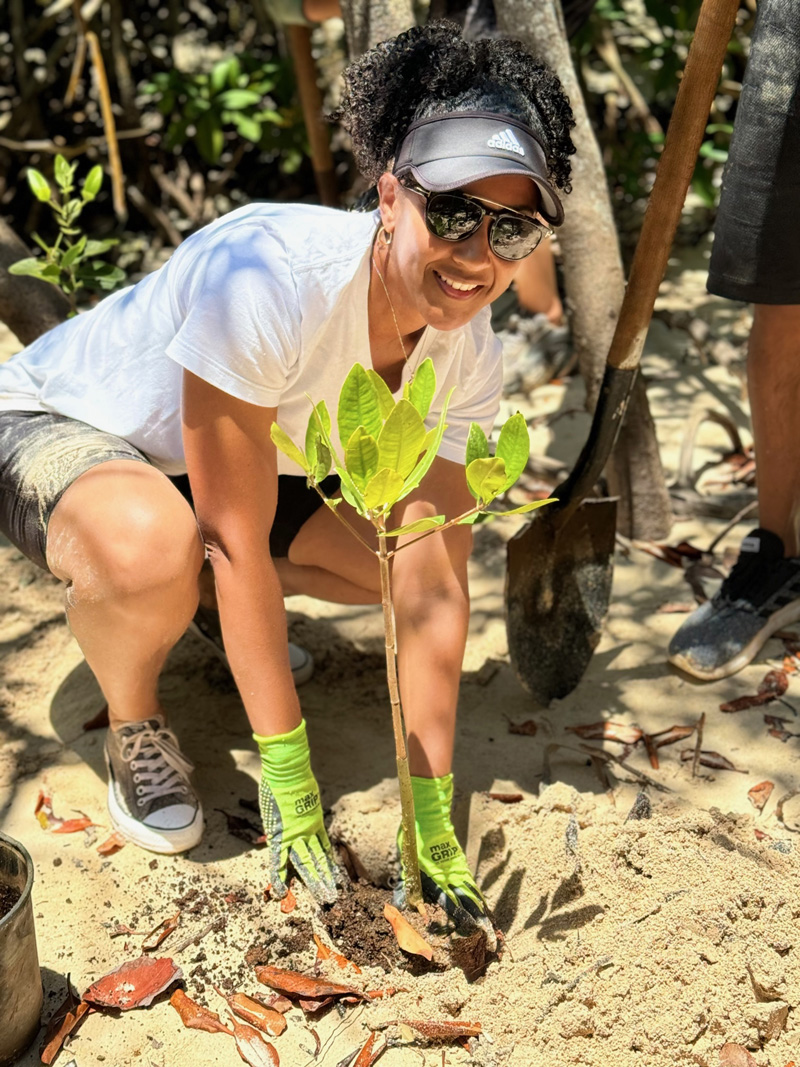
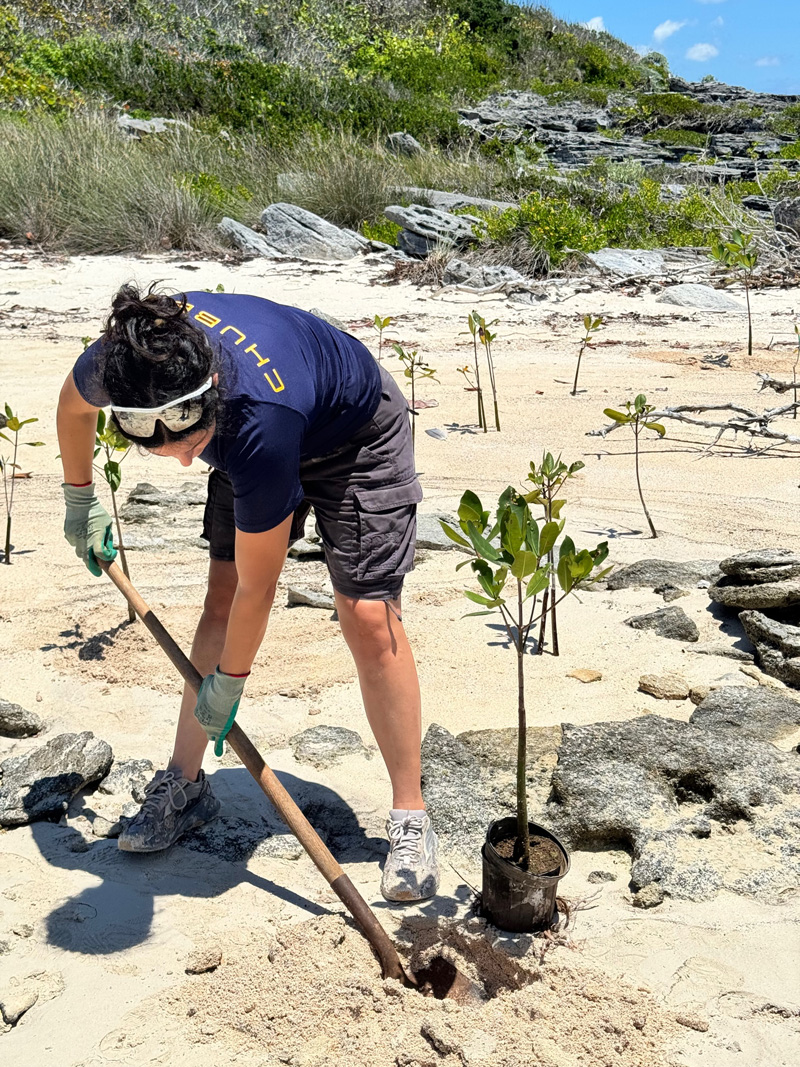
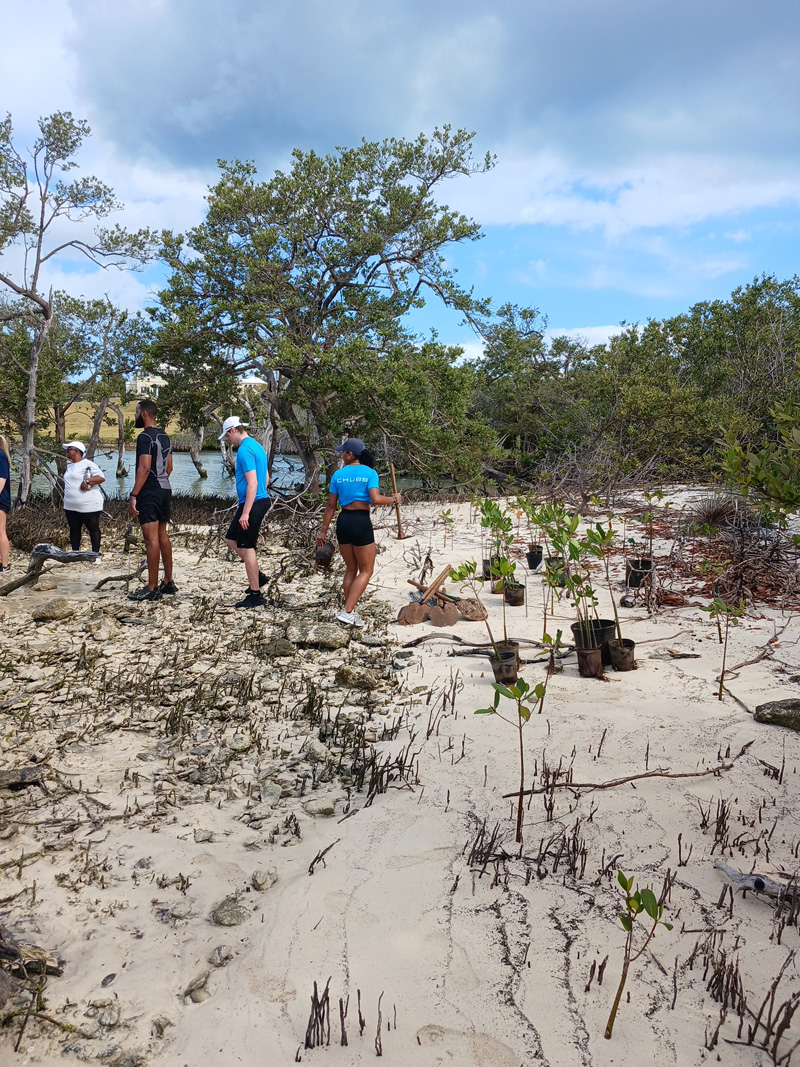
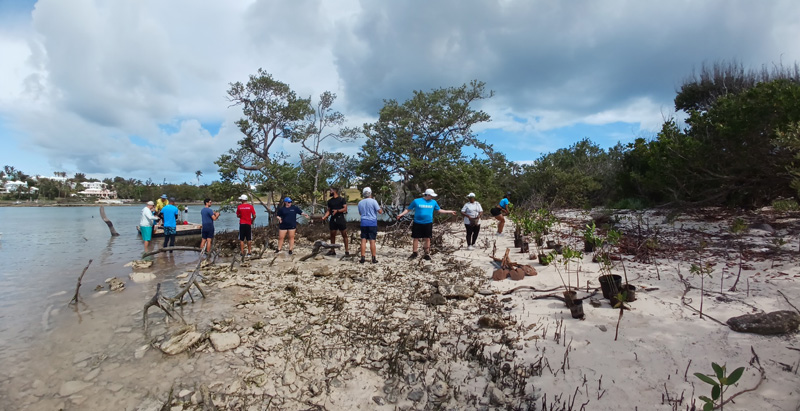
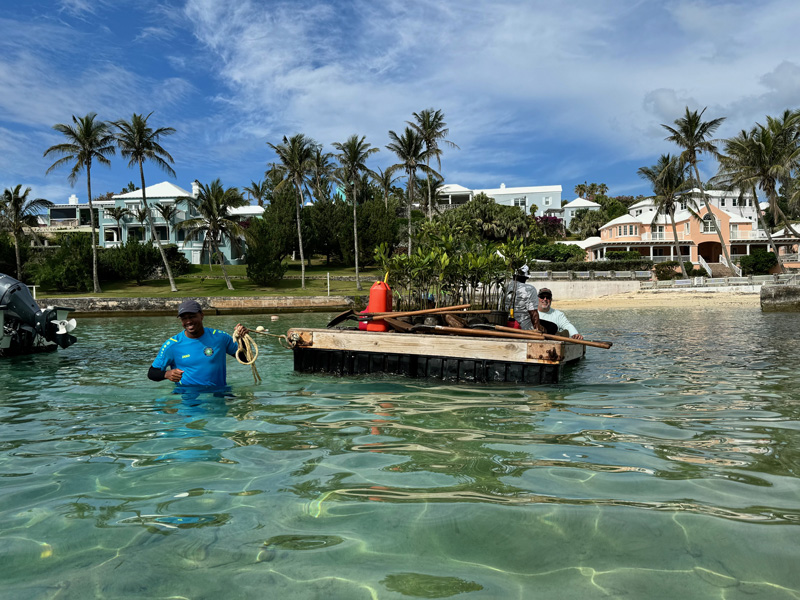
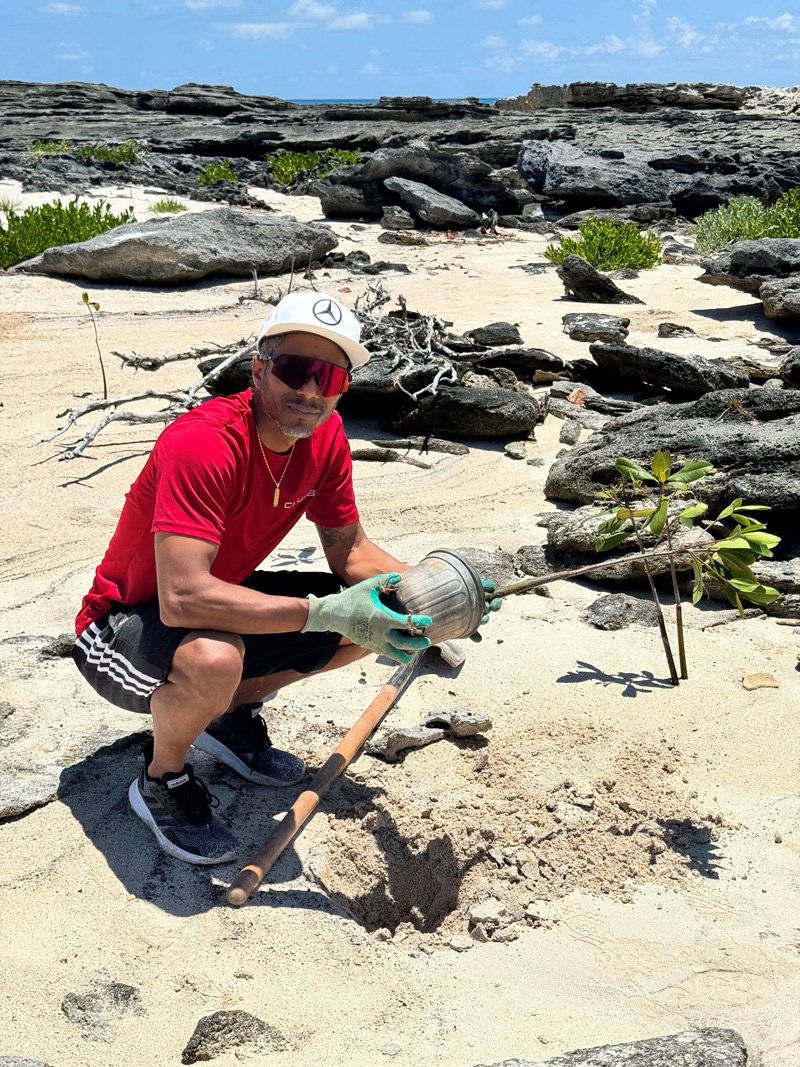


Hungry Bay and the mangroves was my playground as a child.
Sea level rising, some major storms and erosion has made a huge loss of mangroves. Last time in the bay by boat the area was barely recognizable.
An area open to the sea where water once flowed only with the highest of tides combined with a big sea now regularly has water flowing in.
That area will need to be restored if the young mangroves are to survive.